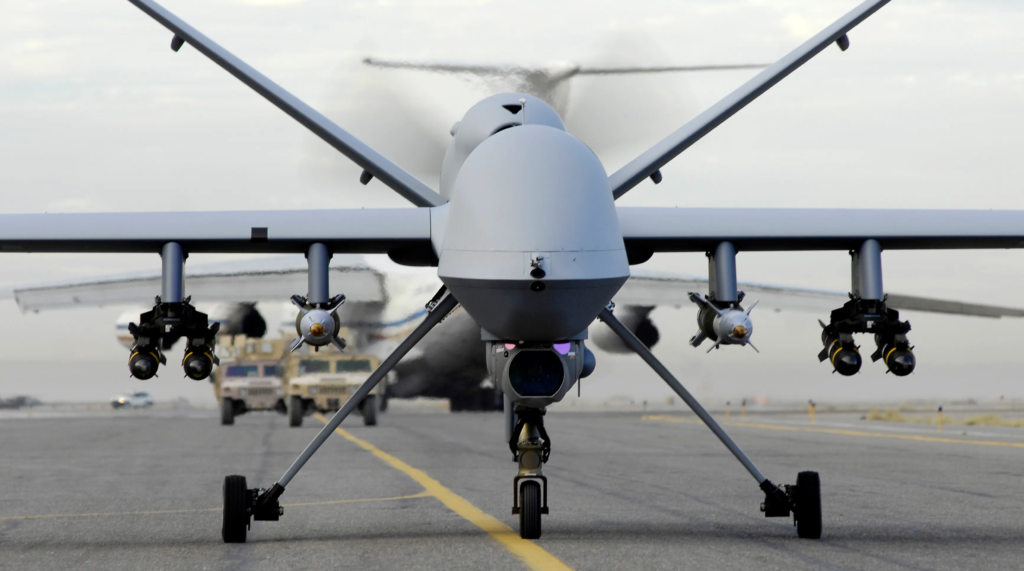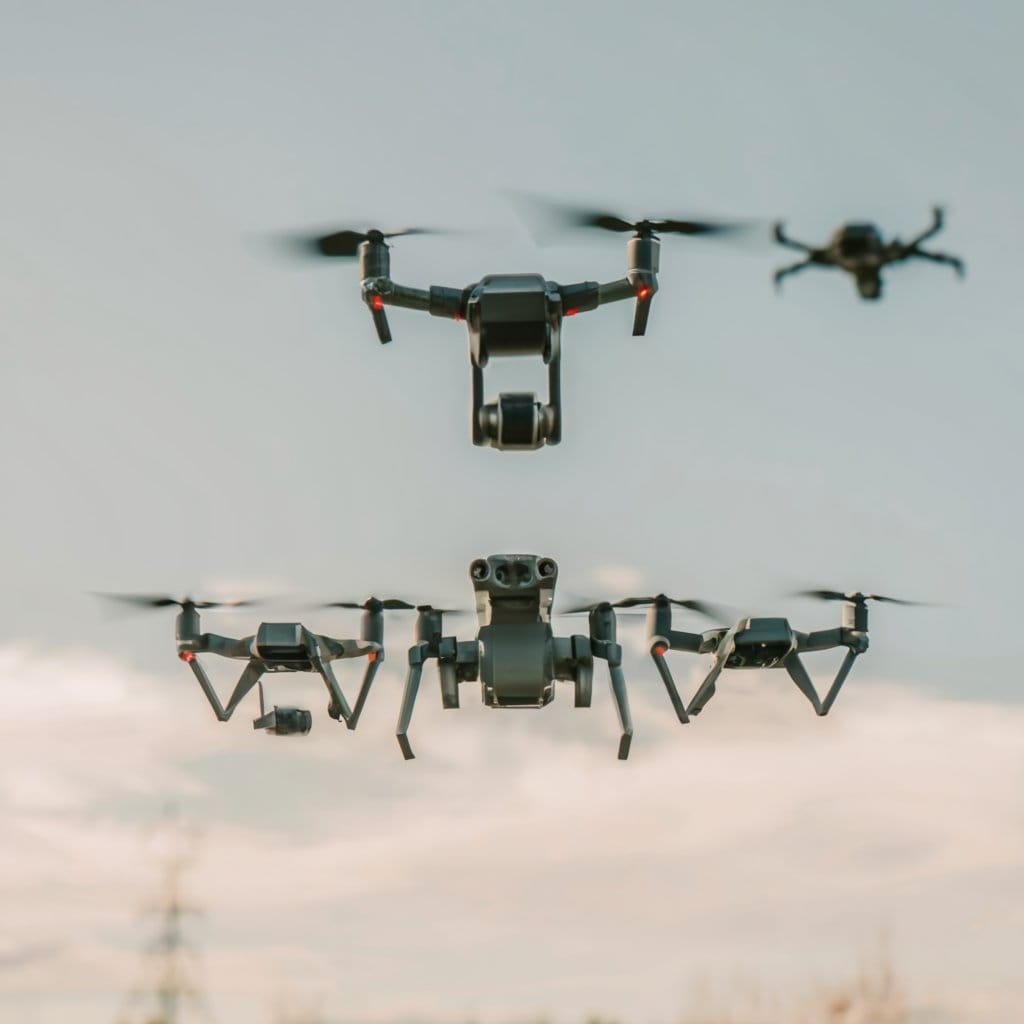
Unmanned Aerial Vehicles (UAVs), commonly known as drones, have revolutionized various industries with their versatility and capabilities. From aerial photography to agricultural surveys, drones offer a wide range of applications that continue to expand. This blog post delves into the world of drones, exploring their uses, benefits, regulations, and future trends shaping this rapidly evolving technology.
Whether you are a drone enthusiast, a professional seeking to integrate drones into your work, or simply curious about this cutting-edge technology, this post will provide valuable insights into the exciting world of drones. Stay tuned to discover how drones are transforming industries and unlocking new possibilities for businesses and individuals alike.
Key Takeaways
- Utilize UAV Responsibly: Whether for recreational or professional purposes, understanding the regulations and safety measures associated with UAV is crucial.
- Explore Diverse Applications: From warfare to humanitarian aid, drones have a wide range of applications that can benefit various industries and sectors.
- Stay Informed on Latest Developments: Keeping up-to-date with recent news and advancements in drone technology can provide insights into future trends and opportunities.
- Consider Educational Opportunities: Pursuing education and advanced training in UAV operations can open doors to specialized career paths and enhance skills in this evolving field.
- Prioritize Safety and Security: Emphasize the importance of safety protocols and security measures when operating drones to prevent accidents and protect sensitive data.
- Support Regulatory Efforts: Engage in discussions and initiatives that promote responsible drone use and contribute to shaping regulations that ensure safe and ethical practices.
Understanding Drones
Classification Types
Drones are classified into categories based on their characteristics and usage. Some common classifications include fixed-wing, rotary-wing, and hybrid drones. The criteria for differentiation include flight capabilities, payload capacity, and operational range. Categorizing drones is essential for streamlining operations, ensuring regulatory compliance, and optimizing performance.
Size and Weight
The size and weight of drones significantly affect their flight performance. Smaller drones are more agile, while larger ones can carry heavier payloads. Various models range from mini-drones weighing a few grams to industrial drones weighing over 20 kilograms. Designers must consider size and weight to balance maneuverability, endurance, and functionality effectively.
Altitude Capabilities
Drones operate within specific altitude ranges depending on their design and purpose. Commercial drones typically fly at altitudes below 400 feet, while military drones can reach much higher altitudes. Factors influencing altitude capabilities include propulsion systems, aerodynamics, and onboard sensors. Altitude capabilities play a crucial role in mission planning, surveillance operations, and data collection accuracy.
Degree of Autonomy
Drones exhibit varying levels of autonomy in their operations. Basic drones require manual control for navigation, while advanced models feature autonomous flight modes and obstacle avoidance systems. Technological advancements have led to increased autonomy through GPS integration, artificial intelligence algorithms, and machine learning capabilities. Enhancing autonomy improves efficiency, safety, and mission success rates.
Historical Journey of UAVs
Early Developments
Unmanned Aerial Vehicles (UAV) drones have a rich history that dates back to the early 20th century. In the 1910s, Archibald Low pioneered radio-controlled aircraft, laying the groundwork for UAV technology. This marked the inception of autonomous flight systems that revolutionized aerial operations.
World War II Use
During World War II, drones played a pivotal role in reconnaissance and target practice missions. They were extensively used by both Allied and Axis powers for surveillance and combat operations. One notable example is the German V-1 flying bomb, an early form of a cruise missile launched against England in 1944.

Postwar Evolution
The post-World War II era saw significant advancements in UAV technology as nations sought to enhance their military capabilities. In the 1950s, the United States developed the Ryan Firebee series, marking a crucial milestone in UAV evolution. These drones were utilized for reconnaissance missions during conflicts such as the Vietnam War.
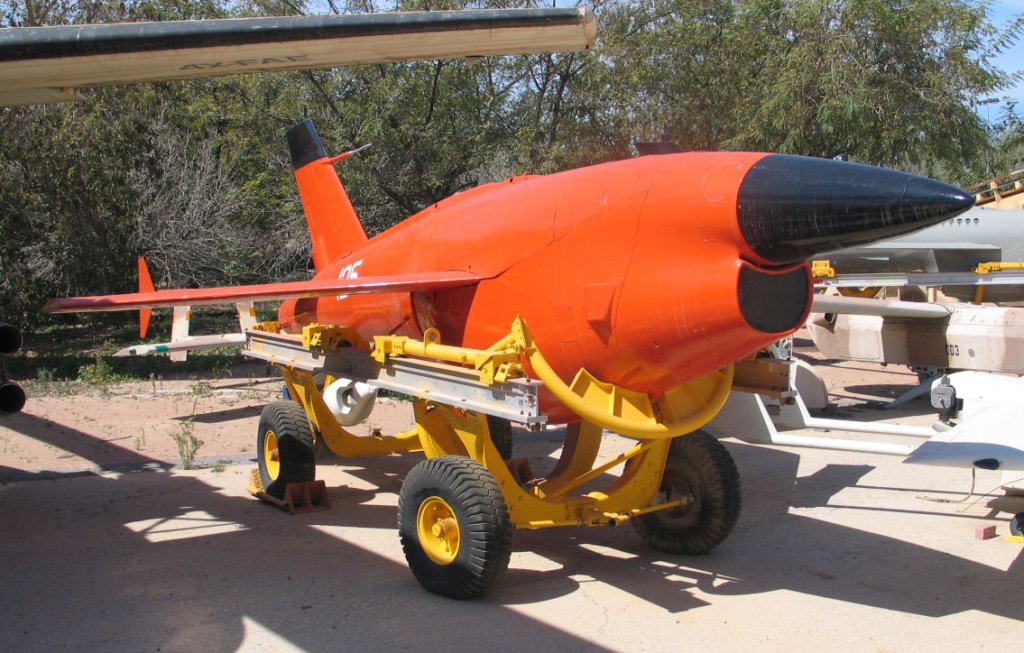
Modern UAV Advancements
Today, modern drone systems incorporate state-of-the-art technologies that have transformed aerial operations. Advancements in artificial intelligence, sensor technology, and communication systems have enhanced drone performance significantly. These innovations have enabled drones to undertake complex missions with precision and efficiency.
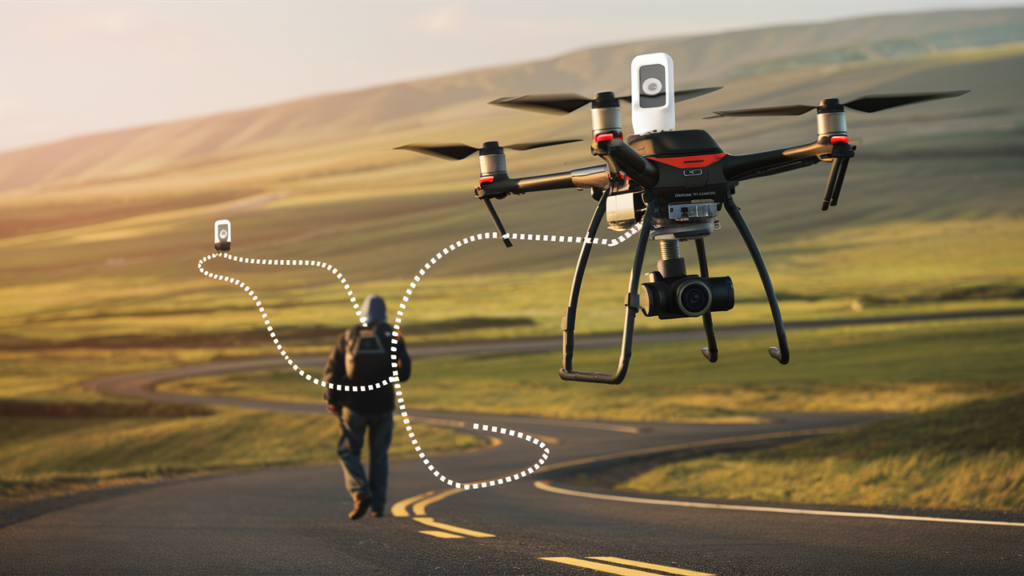
UAVs in Warfare
Diverse Applications
Drones, or unmanned aerial vehicles, have diverse applications across various industries. They are commonly used for surveillance, reconnaissance, and intelligence gathering. In agriculture, Drones assist in crop monitoring and spraying pesticides efficiently. They play a crucial role in disaster management by providing real-time aerial views for search and rescue operations.
Security Measures
Security measures are paramount to safeguard drone operations from potential threats. Encryption and authentication methods are employed to secure communication systems between the drone and the ground control station. These measures ensure data integrity and confidentiality during missions. Implementing strict access controls and utilizing secure channels help prevent unauthorized interference with drones.
- Encryption methods
- Authentication protocols
- Access controls
- Secure communication channels
Threats and Countermeasures
Drones face various threats that require adequate countermeasures to mitigate risks effectively. Cybersecurity risks pose a significant challenge, including data breaches and system hijacking. To combat these threats, continuous monitoring of network traffic is essential to detect any anomalies promptly. Employing firewalls, intrusion detection systems, and regular software updates enhances the resilience of drone systems against cyber attacks.
- Data breaches
- System hijacking
- Continuous network monitoring
- Firewalls and intrusion detection systems
Civil Uses of UAVs
Aerial Photography
Unmanned Aerial Vehicles (UAVs) play a crucial role in capturing aerial photographs for various applications. These drones are equipped with high-resolution cameras that can capture detailed images from different altitudes. The ability to fly at varying heights enables drones to obtain unique perspectives that are not easily achievable with traditional photography methods. The flexibility and maneuverability of drones make them ideal for capturing stunning aerial shots for industries like real estate, agriculture, and filmmaking.
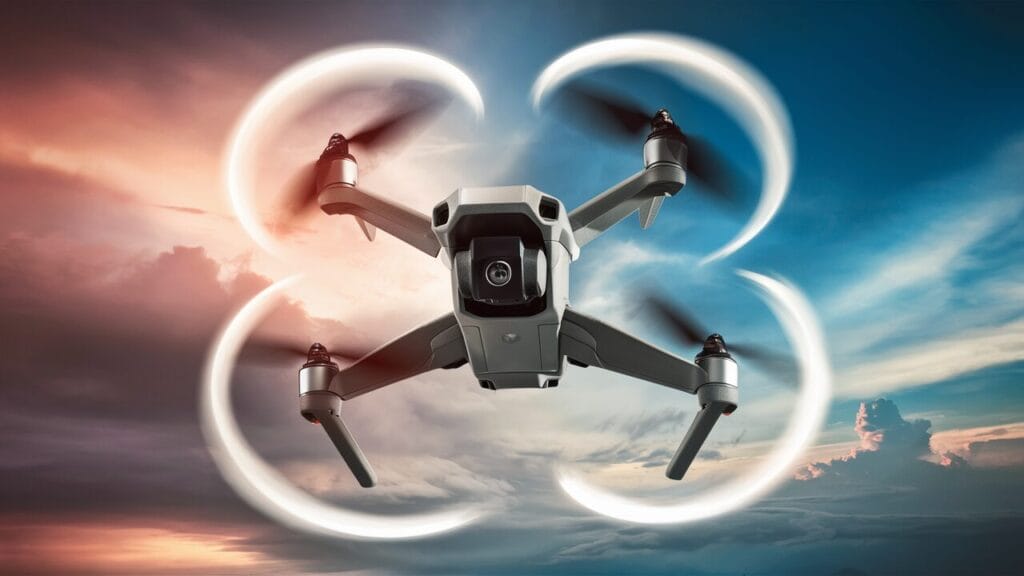
One significant advantage of using UAV for aerial photography is their cost-effectiveness. Compared to manned aircraft or helicopters, drones require lower operational costs, making them a more affordable option for capturing aerial images. Drones can access hard-to-reach areas, such as rugged terrains or disaster zones, where traditional aircraft might face challenges in maneuvering.
The impact of drones on the field of aerial photography has been substantial. These drones have revolutionized the way professionals approach aerial imaging tasks. With advancements in technology, drones now offer enhanced stability and precision in capturing images, leading to higher-quality results. As a result, industries ranging from construction to environmental conservation have embraced drones as valuable tools for their aerial photography needs.
Environmental Monitoring
Drones are increasingly being utilized for environmental monitoring and conservation efforts worldwide. These drones enable researchers and environmentalists to gather data on ecosystems, wildlife populations, and environmental changes with greater efficiency than traditional methods. By equipping drones with specialized sensors, scientists can collect real-time data on air quality, water pollution levels, and deforestation rates.

The benefits of using drones for assessing environmental changes are manifold. These drones provide a non-invasive way to monitor wildlife habitats without disturbing the natural environment. Moreover, drones offer a cost-effective solution for conducting large-scale surveys of remote areas that are challenging to access by foot or vehicle. In recent years, numerous environmental monitoring projects have successfully employed drones to track wildlife migration patterns, study climate change impacts, and monitor illegal logging activities.
- Bullet list:
- Cost-effective alternative
- Access hard-to-reach areas
- Enhanced stability in image capture
UAVs in Law Enforcement and Humanitarian Aid
Law Enforcement
Unmanned Aerial Vehicles (UAVs) play a crucial role in supporting law enforcement agencies by enhancing their capabilities. These drones are utilized for surveillance, enabling authorities to monitor large areas efficiently. UAV are instrumental in search and rescue operations, providing aerial views that aid in locating missing persons or suspects swiftly. Moreover, these drones contribute to crime prevention by offering real-time data and monitoring potential criminal activities.
- Pros:
- Increased surveillance efficiency
- Swift search and rescue operations
- Enhanced crime prevention strategies
- Cons:
- Privacy concerns
- Limited flight time for prolonged operations
Humanitarian Efforts
In the realm of humanitarian efforts, drones have revolutionized aid delivery and disaster response initiatives. These drones are utilized to deliver aid to remote or inaccessible areas quickly, providing essential supplies to those in need. Furthermore, drones are deployed to assess disaster areas, offering detailed aerial imagery for better planning and resource allocation. By supporting relief efforts, these drones significantly improve the efficiency and effectiveness of humanitarian missions.
- UAV enable rapid aid delivery.
- They provide crucial aerial imagery for disaster assessment.
- Drones enhance the overall effectiveness of humanitarian operations.
Safety, Security, and Regulation
Safety Measures
Drone operations are governed by strict safety protocols to minimize risks and ensure safe usage. Measures such as pre-flight checks, maintenance schedules, and pilot training are crucial for safe UAV deployments. Prioritizing safety is essential to prevent accidents and protect individuals on the ground.
- Regular maintenance checks
- Pilot training programs
- Pre-flight inspections
Security Vulnerabilities
Potential security vulnerabilities in drone systems pose significant risks, including cyber attacks and data breaches. Ensuring secure communication channels, implementing encryption measures, and regularly updating software are essential to mitigate security threats. Protecting sensitive data from unauthorized access is paramount for enhancing system resilience.
- Secure communication channels
- Encryption measures
- Software updates
Regulation and Controls
The regulatory framework governing drone operations includes legal requirements and restrictions to ensure safe and compliant usage. Regulatory bodies play a crucial role in enforcing rules to prevent misuse of UAV technology. Compliance with regulations is vital to maintain operational integrity and protect public safety.
- Legal requirements
- Restrictions on drone usage
- Role of regulatory bodies
Educational and Advanced Operations
Educational Insights
Learning about drones offers valuable educational opportunities for individuals interested in this technology. Various online courses, workshops, and training programs are available to provide comprehensive knowledge about drones. These resources cover topics such as flight operations, regulations, maintenance, and applications.
Participating in training programs and obtaining certifications in drone technology is crucial for enhancing skills and ensuring safe operations. Certifications like the FAA Part 107 license demonstrate proficiency in drone piloting and understanding of aviation rules. Such credentials are essential for legal compliance and credibility in the industry.
The field of drones presents promising career prospects with significant growth potential. Professionals skilled in operating drones can pursue diverse roles in industries such as agriculture, photography, filmmaking, surveying, search and rescue, and more. The demand for drone operators continues to rise as businesses recognize the efficiency and cost-effectiveness of using drones for various tasks.
Advanced Operations
In advanced drone operations, operators utilize sophisticated techniques to achieve precise results during missions. These techniques include waypoint navigation for autonomous flights, payload management for specialized tasks like aerial photography or delivery, and obstacle avoidance systems to ensure safe operations in complex environments.
The integration of artificial intelligence (AI) and machine learning (ML) plays a significant role in enhancing drone operations. AI algorithms enable drones to perform tasks autonomously by analyzing data from sensors and cameras in real-time. ML algorithms improve flight performance by continuously learning from past experiences and optimizing routes.
Future trends in drone technology focus on enhancements such as longer flight times through improved battery technology, enhanced data processing capabilities for better image analysis, and the development of swarming capabilities where multiple drones collaborate on missions efficiently.
Recent News and Developments
Innovations
In the realm of drones, advancements in battery technology have significantly extended flight times. New lightweight materials like carbon fiber are enhancing durability without adding weight. These innovations are revolutionizing the capabilities of UAVs.
Collaborations between tech giants and drone manufacturers have led to the development of sophisticated sensors and cameras for UAVs. These partnerships are driving the integration of cutting-edge technology, enabling drones to perform complex tasks with precision.
Breakthroughs
Researchers have made remarkable breakthroughs in AI algorithms for autonomous flight control systems in drones. These advancements allow drones to navigate through challenging environments with greater accuracy and efficiency, opening up new possibilities for various applications.
The introduction of swarming technology has transformed how multiple drones can collaborate on tasks effectively. This breakthrough has paved the way for coordinated missions that require synchronized actions from a fleet of UAVs.
Trends and Advancements
One emerging trend is the adoption of 5G connectivity in drones, enabling real-time data transmission at unprecedented speeds. This advancement is crucial for applications like aerial inspections, emergency response, and delivery services.
Another significant advancement is the integration of machine learning algorithms in UAV systems, enhancing their ability to analyze data and make informed decisions autonomously. This trend is propelling drones into more sophisticated roles across industries.
Final Remarks
The comprehensive exploration of UAV has shed light on their multifaceted roles in various sectors, from military applications to civilian uses, law enforcement, and humanitarian missions. The historical journey of UAVs has evolved significantly, shaping modern warfare strategies and revolutionizing industries worldwide. Safety, security, and regulations play a crucial role in ensuring responsible UAV operations, emphasizing the need for stringent guidelines to mitigate risks.
As technology continues to advance rapidly, the educational sector must adapt to equip future professionals with the necessary skills for operating UAVs effectively. Recent developments have showcased the potential for innovative applications in diverse fields, highlighting the continuous evolution of UAV technology. To stay informed about the latest trends and advancements in drones, individuals are encouraged to engage with reputable sources and participate in ongoing discussions within the UAV community.

